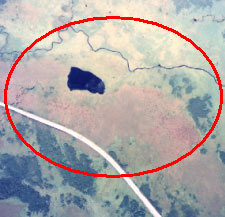|
|
The wetland to be located at lower elevation. It constantly has inflow from surrounding.
Ample water is available since water flows into the wetland constantly. The water tends to contain high nutrition and this encourage specific vegetation to flourish such as phragmites, sedge, and alder. Low moor covers more than 80% of Kushiro Wetland. |
|
|
Intermediate form between low and high moor.
Intermediate moor is the interemediate form of development from low to high moor, so the characteristics are also interemediate. Relatively ample water and nutrition encourage taller vegetation compared to the one of high moor. |
|
||
The wetland to be located at higher elevation. It occasionaly has inflow from rain or snow water. |
||
High moor is the form of wetland where the elevation is higher than surrounding because of the development of accumulation of substrates. Due to this location, the inflow into the wetland become limited only the time of rain or snow water, so at the same time the introduction of nutrition also become limited. Vegetations to be found here represent this characteristics of condition, so are different from the ones at low and intermediate moor. At the warmer region, substrates would be decomposed quickly, so would not accumulate enough to form high moor. High moor at Kushiro Wetland (Akanuma area) |
 |
|